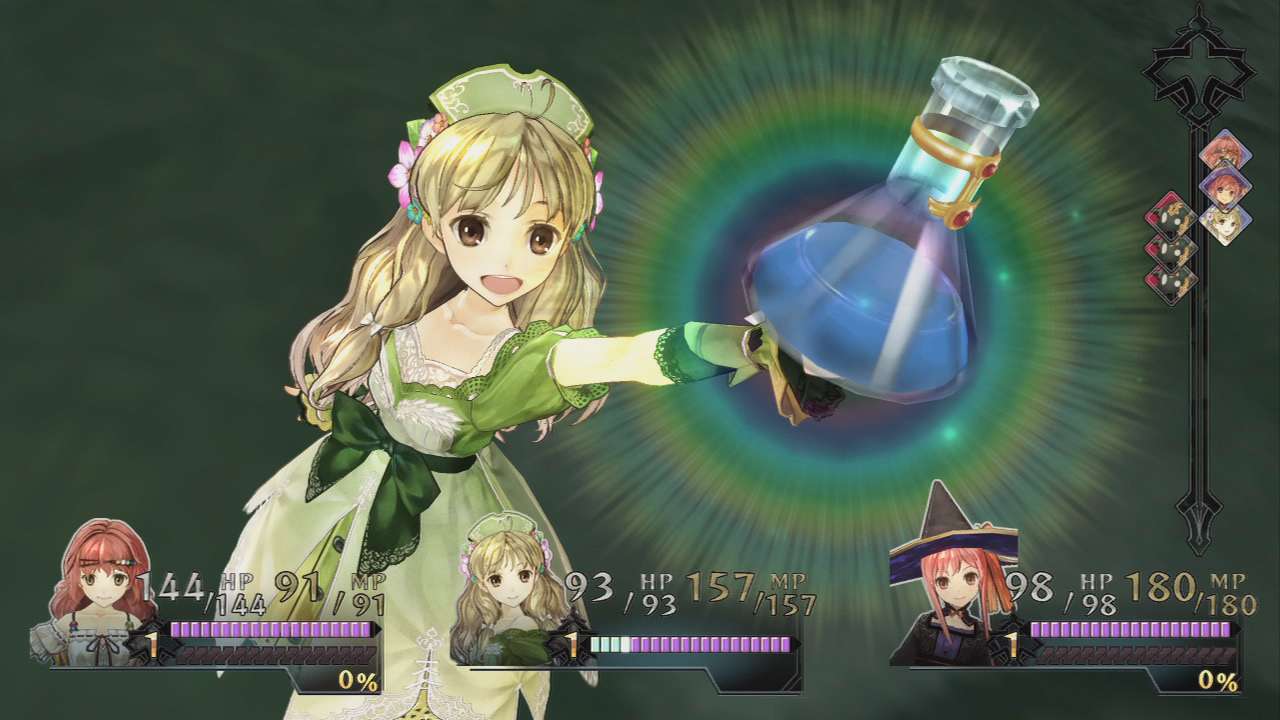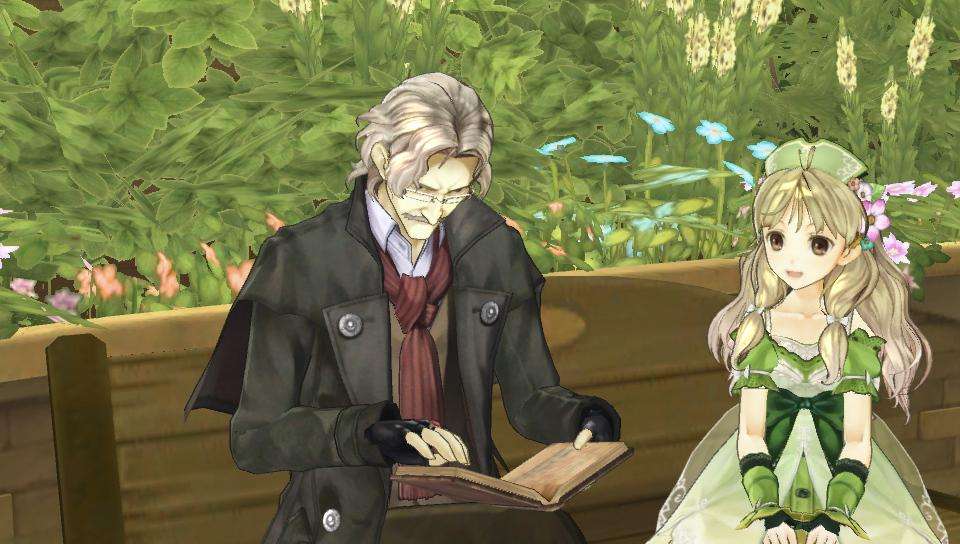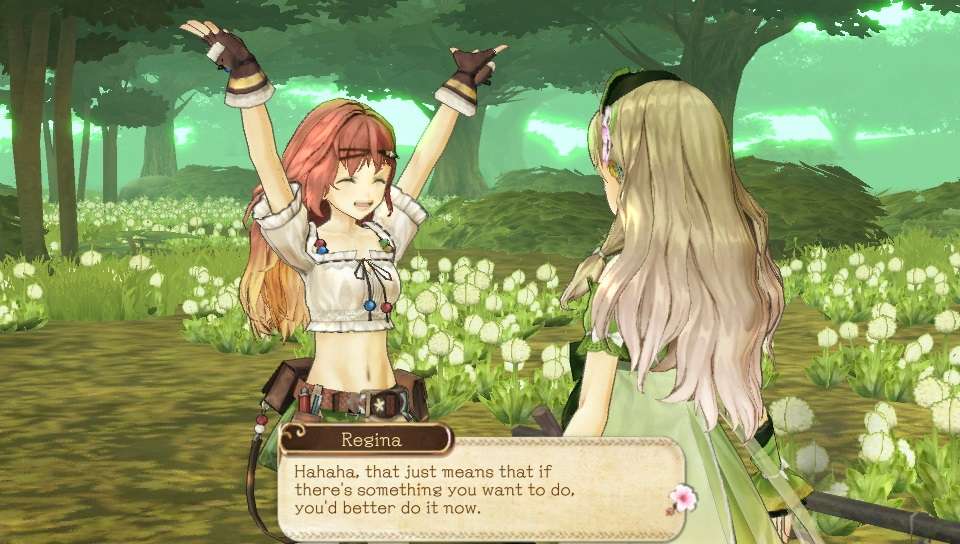
Atelier Ayesha Plus: The Alchemist of Dusk Vita Review
Gust has been hard at work over the years to bring plenty of Atelier games to the PlayStation 3. There are currently five available for the system in the UK, with the last of the Dusk trilogy coming out in the middle of March with Atelier Shallie: Alchemists of the Dusk Sea. While this has been going on, Koei Tecmo has been transitioning the series to the Vita with Plus incarnations of the games. All three of the Arland series have had ports, so next on the list is Atelier Ayesha, the first entry in the Dusk trilogy, which has now arrived on Vita as Atelier Ayesha Plus and is another solid port to the handheld, increasing its ever growing library of Japanese games.
The Arland trilogy were known for having main female characters that were exceedingly charming, caring and sweet, and that’s the same with the heroine of this game, Ayesha Altugle, a young girl who runs a herbalist and produces medicines for the local towns. While she might share some of the same characteristics as the other alchemists before her, the tone of Atelier Ayesha starts off very different.

For the plot of the new trilogy, Gust decided to go with a world where alchemy has been forgotten, leaving behind a civilisation that has to make do by other means, struggling with what the future might hold. It’s a gloomy beginning where the player finds out that Ayesha has been living on her own for the past few years. She’s a strong-willed character, because Ayesha had to deal with taking over the store when her grandfather died, but that wasn’t the only issue, since her sister went missing in the local ruins a few years ago. Everyone presumed Nio was dead, with a grave erected at the site to remember her, but one day, Ayesha visits the grave and sees a vision of her sister. Seeing this paranormal activity as a message, Ayesha goes on a trip to find her missing sister and help her, while at the same time learning the wonders of alchemy.
It’s a nice departure for the series, as Atelier Ayesha tries to bring a tale that is more emotional than any of the Arland games, using a world surrounded with a future of melancholy that is brightened up by a smile from the light-hearted nature of the main characters. Atelier Ayesha’s cast make the journey enjoyable with all their banter – there is a lot of that – but none of them will ever offer any surprise, as they fill in the stereotypical roles that you’ll recognise as soon as they begin to talk and reveal their personality. At least the adventure should put a smile on anyone who sticks with it, as all this gloom is spiced up with likeable family humour. As for additions to the story, the Plus edition of Atelier Ayesha doesn’t add more to the central story.

The darker tone of the game is also displayed through its visuals, which remain cel-shaded, but with colours washed out, losing the brightness of the colourful rich world and in turn showcasing that this country is one that has had plenty of depressing times. It’s still a great looking game though, one that looks beautiful, albeit slightly jaggy, on the handheld and is only spoilt by some frame rate drops during zoomed out scenes, such as towns, or heavy action.
Hanging over the story is the traditional Atelier time limit, in which an objective has to be met before the allotted time has finished. In the case for this game, you have three years to help Ayesha find her sister or suffer the dreaded knowledge that you will never know what happened to poor Nio. Actions require time to perform, so crafting items, exploring maps and gathering supplies will all take days to accomplish. Don’t let this idea of a time limit install any fear into you, because there is a generous amount of time here to get everything done, much more forgiving than any of the Arland series, and since it is easy to keep focus on what to do, you never feel like time is against you. Time feels like it’s here as a mechanic because that is what the series has featured since it arrived on PlayStation 3.

During this course of time players will be fighting enemies, completing quests/requests and gathering items from the wild. The quest system has two main functions. One is to explore around locations and dungeons and progress the main story, while the other is to complete side objectives for people all over the country. There are a ton of these spaced around, and if it wasn’t for the star marked on the quest book to inform you which quest is part of the main plot line, it would be easy to go about losing the central plot and doing some alchemy or taking part in the special events that happen. The game includes all the DLC that was available on the PS3, increasing the quest count even more. While it might be easy to finish the game within its time limit, there is plenty here to keep you busy, especially if you want to do all the extra quests – you’re looking at around 40 hours to beat Atelier Ayesha Plus.
Gathering items is essential to making various syntheses. It’s an easy system to explain, just walk up to a glowing symbol within the environment and hold down a button to gather all the materials. Added party members will give a chance to find rarer items in the same gathering spot. Atelier Ayesha makes keeping the contents of your basket easy to sort, as items of the same type are stocked together, rather than taking up multiple squares, freeing up space in the rather limited 60 slot basket. Items can also be stocked in a container at any of the home bases in the major towns.

Recipes are required to figure out how to craft specific items, but the Dusk series makes alchemy user friendly, as ingredients fall into categories, which can be used to make the item, but the quality of said item will be affected depending on what is used. Items do come at a cost of Crafting Points (CP), as using these will mean the item has a chance to alter the final stats of a synthesis. Items can still be used if no CP is left, but these will just count as a number towards finishing the required amount to make something – no stats will be added for any items blended after CP has been reduced to zero. As players spend more time synthesising items, Ayesha will gain levels in her alchemy skill, making it easier for her to craft items with added bonuses and increased quality. Being an alchemist in the world of Atelier Ayesha is addictive, especially when on the way to creating something powerful. It might not be as complex as in the Arland games, but this streamlined and automatic buff approach reduces the frustration of going out of your way to find a rare item hidden stupidly in the world just to gain its buff.
Combat is an important aspect of any JRPG, and the battles in Atelier Ayesha stick to the tested formula of turn-based action. Enemies appear on the map, so encounters are based on either getting the advantage over them by hitting them with Ayesha’s staff to get a pre-emptive attack or getting touched by the enemy to start the battle on equal grounds. Fights have to include Ayesha, but two other combatants can be by her side. One thing that Ayesha doesn’t have is skills; instead, she uses the power of her alchemy to use crafted items that could cause damage, such as bombs, along with attacking with her staff. Other characters can use skills, mostly based on their character type, such as Bell using magic, since she’s a self-proclaimed witch. Lastly, each character can move positions to help with back attacks (deals more damage) or to get closer together so that a character can use active command points to assist in an attack, get a quick back attack or help defend another character from enemy assault. Active commands build up each turn and can be stocked until the metre is full. Battles are not complex, but there are enough mechanics here to make all the fighting stay away from the monotonous.

For people who have already played the PS3 version of Atelier Ayesha, you might be wondering if the Plus port on Vita is worth your time. Atelier Ayesha Plus adds numerous amounts of new costumes for the cast, a couple of new locations, all the DLC from the original PS3 game, meaning that Marion and Odelia are included as additional characters, new bosses are slotted in and a new hard mode that will make battles much more challenging. Lastly, players can try beat Album Challenges, which are new tasks involving things like getting to level 10 or finding all gathering points, to unlock costumes or other exclusive bonuses, such as swapping party members without having to travel to their house. All this is certainly aimed for hardcore fans who would like to play the game again, and for people who haven’t played Atelier Ayesha, the question for you is an easy one – can you handle frame rate drops to have this solid JRPG on the go?
Atelier Ayesha Plus: The Alchemist of Dusk is a solid port from Gust, which adds another Atelier game to the PlayStation Vita. This entry in the Atelier series makes a great starting point for newcomers, thanks to it being the start of a new chapter, the streamlined alchemy mechanics and easy to understand quest system. While the frame rate doesn’t hold up as well as its big brother on PS3, the game still remains fun, addictive and charming, and will be a welcome addition to anyone who owns a Vita and wants a stress free JRPG to play on the move.
